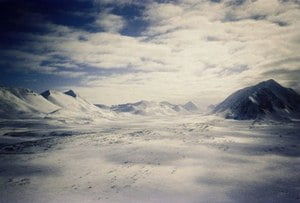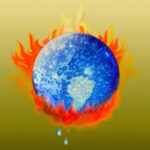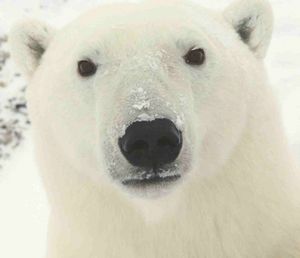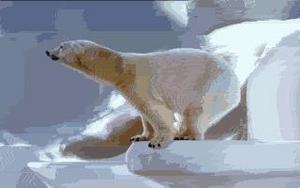With Earth Day just around the corner, climate change awareness once again rises to the forefront of the news. Ecosystems are being carefully monitored all over the world as global temperatures slowly rise with devastating effects. Perhaps no other area is as profoundly affected by climate change right now as the Arctic and its diverse animal species. Arctic sea ice is disappearing at a rapid rate and changing the entire ecosystem. Polar Bears may be the ‘poster children’ for global warming, but there are several other Arctic animals that are already feeling its impact as well.
Is Climate Change Real?
There are many skeptics out there that believe that climate change isn’t real. However, according to several scientific websites including NASA, climate change is very real and happening more quickly than we think. According to NASA, several factors are in play all over the world:
-Sea level is rising quickly at nearly double in 10 years as compared to the entire century.
-The earth has been warming since 1880, but significantly more in the last four decades.
-The oceans are absorbing some heat and therefore becoming warmer and more acidic
-Ice sheets in the Antarctica and Greenland are decreasing in mass
-Arctic sea ice is much thinner and less widespread
-Glaciers are disappearing all over the world
-Torrential rainfall and more frequent high temperatures are becoming the norm for the U.S.
What and where is the Arctic?
The Arctic region is primarily made up of the ocean (which is centered on the North Pole) that is surrounded by Alaska, Greenland, Russia, Canada and various islands. Its average temperature for the warmest month (July) is below 10 °C (50 °F). It has a constant presence of ice in the central part of the ocean. Snow and ice cover the land for much of the year. In the Arctic, the sun shines much of the day in the summer and not much at all during the winter.
Vulnerable Arctic Animal Species
From first glance, the Arctic deceptively appears to be devoid of life, but in reality it is home to various species of animals found nowhere else. The Polar Bear is perhaps the most widely known Arctic resident, but several other animal species also call it home. Sadly, these other native creatures are also facing a fight for their survival.
Polar Bear– 2008 estimates put the number of polar bears in the Arctic at around 20,000-25,000. Polar Bears heavily rely on the sea ice to hunt seals. As climate change causes ice to melt, they find themselves using more energy to swim farther to locate prey. Occasionally they drown. Snow and ice also provides shelter for birthing females.
Walrus– Their numbers are estimated at over 200,000. Walruses depend on ice to give birth and congregate during reproduction. Walruses also use ice to rest between dives for food and swimming too far may be detrimental to their immune systems.
Arctic Fox– There is estimated to be well over 100,000 Arctic Foxes left. Although, it seems their numbers are relatively high, they are especially vulnerable to climate change. They turn white in winter as a protective camouflage and therefore need snowfall for survival. They also rely on sea ice to forage for food and interact with fewer predators. As habitats become warmer, the Arctic Fox also now faces more competition from its intrusive larger and more adaptable cousin, the Red Fox.
Musk Ox– Their population is estimated between 80,000-125,000. They are extremely adapted to frigid environments. However, climate change is threatening their very survival. There are more incidents of warm weather dumping rain on the snow and freezing grass. Unable to break the ice to get to their food source, they starve. Winter coats can also cause overheating and stress, leading to outbreaks of pneumonia.
Narwhal– Currently, their population sits at around 75,000. Less sea ice and warmer temperatures leads to greater predation by Orcas and less Narwhal prey to hunt. In particular, the high mobility of the sea ice and fluctuating temperatures changes the locations of known breathing holes thus leading to drowning. Some even become entrapped in breathing holes as they shift and close due to changing temperatures.
Beluga Whale– Numbers stand at about 100,000. The disappearing ice from climate change is resulting in more ship traffic through their habitats. More Belugas are being struck by ships and exposed to toxins. The noise from ships also interferes with their behavior and communication.
Why Should We Care?
The Arctic plays an important role in the global climate and will not only impact these animals, but humans as well. The non-profit organization, Green Facts, states there are three major ways the warming Arctic may be fueling climate change:
-The earth will warm even more as there is significantly less ice in the Arctic to reflect the sun back to space
-Melting Arctic ice and more rain will lead to a greater concentration of freshwater in the oceans, potentially changing ocean currents
-Thawing permafrost could release significantly more greenhouse gases into the atmosphere





